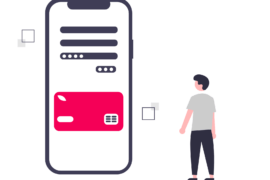In-app advertising is hot right now. Emarketer predicted, in-app advertising will go up by 25.1% by the end of 2018. However, measurement of in-app ad viewability still remains a challenge for mobile marketers and publishers. Why?
Because ad viewability verification methods are very different for in-app and browser environment. And varied techniques of measurement sometimes give inaccurate results. Then what’s the solution?
Currently, open measurement SDK is best option available to mobile app publishers to get standard and reliable ad viewability metrics.
So, What is IAB OM SDK?
IAB OM SDK or IAB Open Measurement Software Development Kit was launched in April 2018. It simplifies ad measurement in the mobile app environment by a third-party vendor.
Prior to OM SDK, publishers had to install every vendor’s SDK (piece of code) to their mobile application code (on which publisher wants to run ads). This provided vendors the accessibility to measure the ad performance and viewability. Meaning, if a publisher was dealing with five vendors, then he/she had to install five different SDKs to his/her mobile application. This made the process complex and created discrepancies in the ad measurement data.
Hence, to tackle such problems, IAB created open measurement SDK. With OM SDK, a publisher can install to the code of their application and avoid integrating multiple SDKs of various vendors.
IAB defines OM SDK as, “The Open Measurement Software Development Kit (OM SDK) is designed to facilitate third-party viewability and verification measurement for ads served to mobile app environments without requiring multiple ad verification service providers’ (Measurement Providers) Software Development Kit (SDK).”
How Does Open Measurement SDK Work?
The IAB OM SDK consists of two components working together to provide desired services. These are:
OM SDK Native Libraries: Native specific libraries (for Android and iOS) collect and store signals to measure the ad viewability and determine ad rendering, display formats, and impression viewability as defined by MRC (Media Rating Council)
OM SDK JavaScript: These codes are used to implement OMID API (Open Measurement interface Definition Application Program Interface) to describe the measurement criteria using which vendors can filter out the details required by them using native library signals.
Image Source: IAB Tech Lab
In a simpler way, first OM SDK native libraries collect the ad viewability data for Android and iOS platforms in the form of signals. Then, to filter out desired information, OM SDK JavaScript decode signals.
OM SDK Version 1
So far, we have only one version for open measurement SDK by IAB. This version includes:
- Android and iOS compatibility,
- Impression measurement, as defined by MRC.
- Viewability verification‒ad container and ad geometry, as defined by MRC.
- Multiple ad types supportability: display (banner, interstitial, and custom size) native ads, native videos, and HTML5 video ads.
- Video verification via all versions of the digital video ad serving template or VAST.

What Are the Key Benefits?
Mobile app publishers are free to work with as many vendors as they want by integrating OM SDK to their applications. Doing so opens up a pool of demand partners who are ready to work with publishers. And it also presents them with many benefits such as:
- Less measurement discrepancies: Different vendors with their SDKs follow different sets of rules to measure ad viewability. Hence, this provides publishers with varied results. Also, this often creates disagreements among vendors affecting the price of publishers’ inventory. Since OM SDK follows MRC standards, measurement discrepancy is referred to be avoided by using OM SDK numbers.
- No more bulky apps: Integrating more than one SDK means increase in publisher’s app size. An increased app size not only discourages users from downloading, but also makes the application slow during the use.
- Transparent reporting: OM SDK designed by IAB will show similar ad viewability report to each demand partner. Unlike the vendor provided SDK which may or may not show the complete ad viewability report. Furthermore, it follows the standards defined by the Media rating Council making the data reliable.
What is the Industry’s Take on OM SDK?
A year after the launch, 23 companies from around the globe have adopted IAB OM SDK which enables it on more than 2 billion mobile devices. Some of the names of OM SDK compliant companies are: Pandora, Display.io, InMobi, Gameloft, Google, OpenX, Tapjoy, and Filpboard.
“The Open Measurement SDK gives our advertising partners an unprecedented level of transparency and measurement by enabling the independent, third-party reporting of their choice. Currently, around 75% of our inventory is OM-enabled and measurement is no longer the inhibitor it once was,” said Paul Longhenry, Senior Vice President of Strategy at Tapjoy.
IAB OM SDK encourages advertisers to go for in-app advertising by providing them reliable ad viewability metrics. As a result, in-app advertising increased by 21% year-over-year as suggested by Pubmatic.
“The MRC has reviewed the IAB Tech Lab certification process and finds it has sufficiently stringent rigor for onboarding OM SDK data from an integrator… We encourage companies to integrate and use OM SDK.” said George W. Ivie, Executive Director and CEO, Media Rating Council. He also suggested that it will continue to support IAB OM SDK and its adoption.
“With in-app advertising viewability and verification simplified and made more consistent, brands can confidently and more easily buy mobile app inventory,” said Dennis Buchheim, Senior Vice President and General Manager, IAB Tech Lab. Also, Dennis Buchheim believes that OM SDK adoption will lead to a solution to ad fraud.
Many big brands have already adopted OM SDK. And soon small and medium-sized companies will join the troop. And the fact that open measurement SDK can actually combat mobile ad frauds (like domain spoofing and CPI frauds), it can be said, OM SDK by IAB is surely going to improve the current state of mobile advertising.

Shubham is a digital marketer with rich experience working in the advertisement technology industry. He has vast experience in the programmatic industry, driving business strategy and scaling functions including but not limited to growth and marketing, Operations, process optimization, and Sales.







